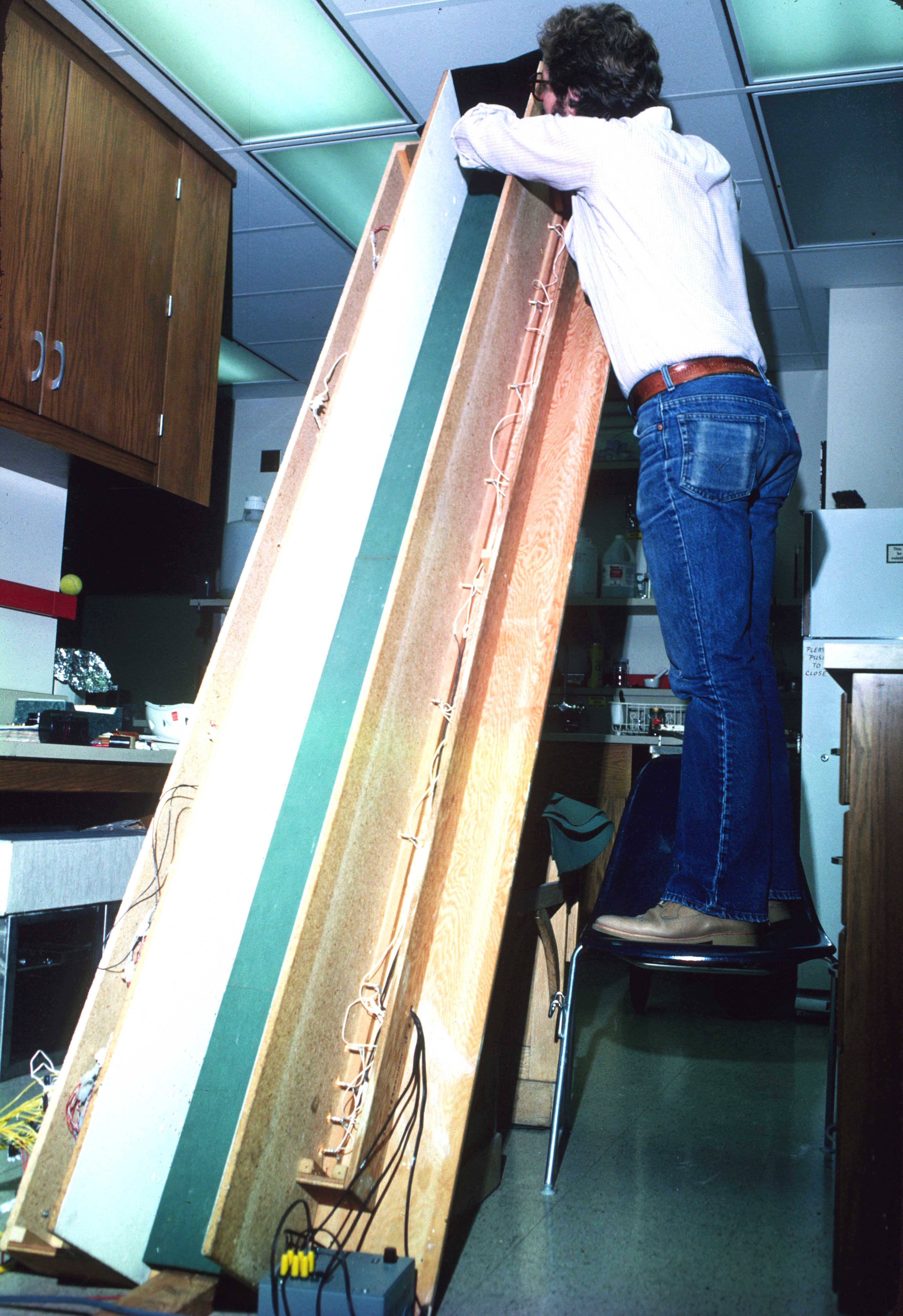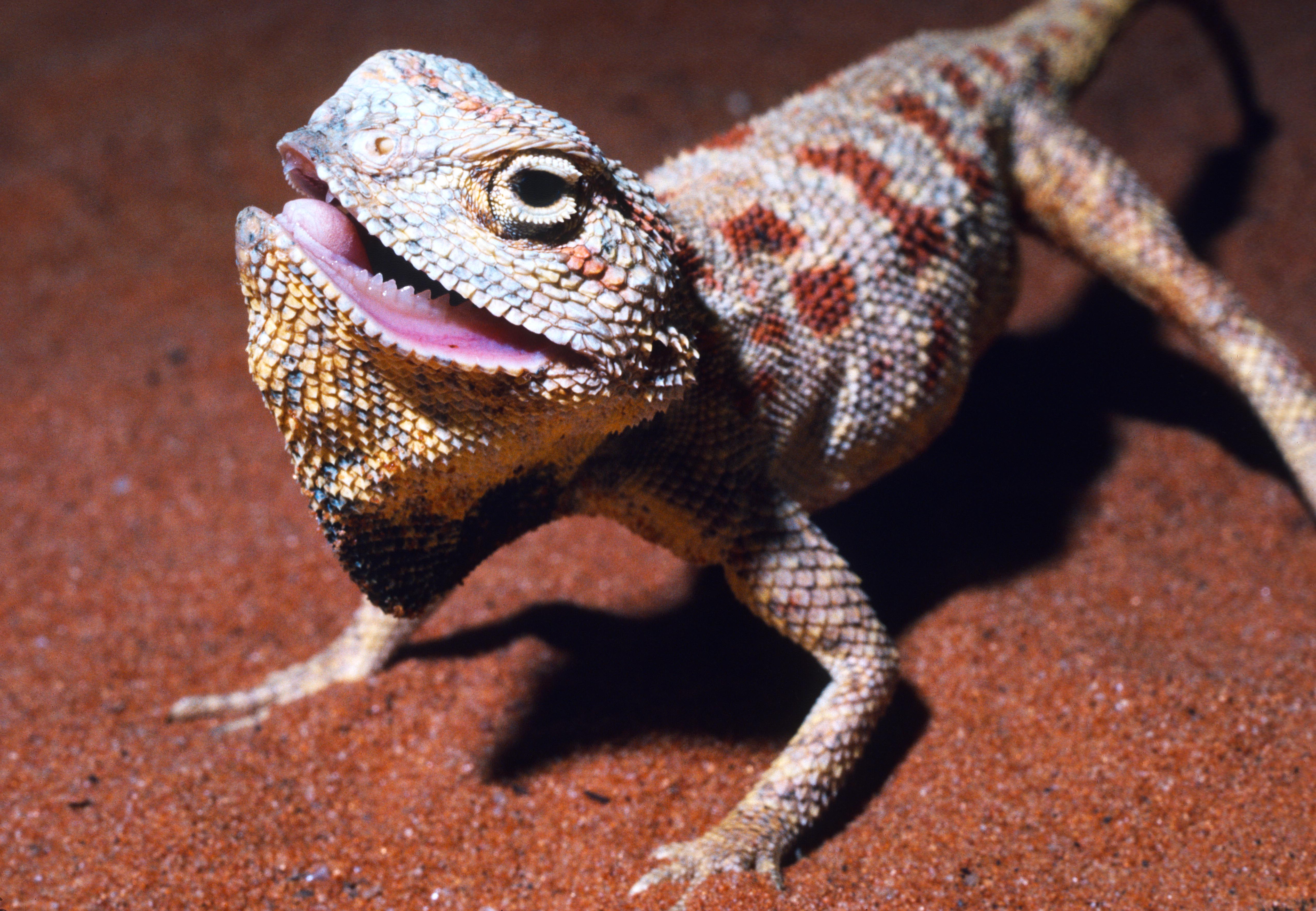38 Harvard Rule of Animal Behavior Revisited
The Harvard Rule of Animal Behavior states that under carefully controlled laboratory conditions, animals will do what they want. I assume that everyone who has worked with live animals has encountered this rule, sometimes with disastrous and unpleasant outcomes. But sometimes the outcome is a positive surprise.
Paul Hertz and I had become great friends and colleagues in grad school. Paul took a job at Barnard College, a prestigious women’s college in New York City. Because Barnard is a teaching college, faculty there could apply for small grants from the National Science Foundation to work with faculty at research institutions.
I was supported by a NSF grant to study the thermal sensitivity of locomotor performance of lizards, and Paul proposed a related project to NSF. He would travel to Israel and measure field body temperatures of several species of agamid lizards that lived in different habitats (lowland deserts, mountains). Then he would take lizards to my lab, and we would measure their thermal dependence of sprint speed.
We expected that agamid species would differ in body temperature in nature (mean and variance, with, for example, montane lizards having lower and more variable temperatures than would lowland desert species). If Paul’s field studies supported that expectation, we could determine whether montane lizards have a relatively low optimal temperature for sprinting and run quickly over a relatively broad range of temperatures.
NSF funded Paul’s proposal, and he was off to Israel. He collected excellent field data on body temperatures and brought lots of agamids for our racing project in Seattle.
After acclimating the lizards for a week or two, we began racing the lizards down a drag strip (see below) at multiple temperatures. On the first day, we ran them at 30 °C, an intermediate body temperature. Each lizard was run six times. Each lizard the next day off, and then was raced again the following day, but at a new temperature.
We used a random number table to select the sequence of temperatures. Once we finished racing at all temperatures, we fit a curve to the fastest time at each temperature, enabling us to compute a “thermal performance curve” (TPC) for each individual. Using simple algebra, we calculated each lizard’s optimal temperature and ‘thermal niche breadth’ (the range of body temperatures over which it at or above some arbitrary threshold, such as 80% of its maximum speed).

The drag strip was 2-m long, had photocells and sensors deployed at intervals along the side, and a black cloth sack at one end, “simulating” an escape burrow. The photocells were connected to a a clock recorder designed mainly by Walter Schneider (I watched). [Note: this was long before personal computers were available.] The recorder used TTL logic (Wally was an amazing electrician, among other talents) and enabled us to determine the elapsed times from the start to each photocell along the strip. We picked the fastest speed over all 0.5 m interals. This system worked great, and our racing experiments (and those of my colleague, Al Bennett) inspired a cottage industry in lizard racing.
But why measure sprint speed? Paul Licht had previously done elegant studies that quantified the thermal sensitivity of enzyme activities and twitch tensions of muscles. However, Paul Hertz, Al Bennett, and I felt that the thermal sensitivity of whole-animal performance traits were more relevant to the ecological and evolutionary questions we were asking. Of course, the activity of enzymes in a cuvette was relevant to exploring the underlying physiological bases of whole-animal activities, but was too far – I felt – from the intact organism to be relevant to ecology. I chose sprint speed because I could measure it easily and non-invasively, and because speed seemed relevant to a lizard’s ability to capture prey, fight each other, or escape predators. [Note: in high school, I’d worked for a while at a concession stand at the local drag strip, and this no doubt influenced my choice of measuring sprint speed.]

To ensure that our racing protocols would be consistent over the weeks required to generate TPCs, we decided that Paul should chase all the lizards and that I would run the clock recorder. Paul pulled a lizard out of the environmental chamber (which controlled the lizard’s temperature) and chased it down the drag strip, and I recorded the maximal speed during each run. Each lizard was run every other day, to reduce the risk of exhaustion biasing our results.
We selected the individuals for our first batch, and ran them at 30 °C, a warm but not hot temperature. Day one went well, and Paul and I were excited that our project was working. Two days later, when we reran the first batch of lizards at 26 °C (randomly selected temperature), individuals of two species refused to run. Paul put them back in the environmental chamber and then later tried them again. However, those individuals still refused to run.
We were worried. Our project was conceptually interesting (evolution of thermal sensitivity), Paul had gathered excellent field data, but now some lizards were not cooperating. We couldn’t measure a performance curve if the lizards refused to run. I distinctly and dejectedly remember thinking, “What will we tell NSF?”
Suddenly, Paul said, “Look at this lizard!” I got up from the clock recorder and looked down into the drag strip. The lizard was not merely refusing to run, it was refusing to run. It stood upright, lowered its dewlap, opened its mouth, curled back its lips and thus exposing its teeth and its black throat. When Paul tried to push it down the track, the lizard would leap and bite Paul’s finger – and hold on if Paul wasn’t fast enough to evade the bite.
 {width=“70%”)
{width=“70%”)
We both instantly had an ‘ah-ha’ moment. We guessed that we must be observing a ‘temperature-dependent switch’ in defensive behavior. When the lizards were warm and thus fast, they would run away from a predator. But when they were cool and sluggish, they would hold their ground and fight back. This wasn’t mere bluff: those lizards had sharp teeth and painful bites. Two of the species showed this switch in behavior, but the other three always ran away, independent of their body temperature.
We started laughing. In a few seconds, our project had gone from a ‘belly up’ disaster (well, at least for two of the species) to one that was much more fun and novel. Over the next week or two, we raced all of the species at various temperatures. When we’d get home each night, we’d record the maximum speed (if any) and defensive behavior (which Paul noted for each individual) for each individual, and add new points to the graphs of speed versus temperature and of behavior versus temperature. And we’d laugh even more.
As the days flew by, we discovered that at body temperatures of 30 °C (by coincidence the temperature on day one) and above, the lizards would always flee from Paul. But at 26 °C (by coincidence the second temperature in the sequence) and below, they would try to bite Paul.
We soon published a paper (1982, with Evitar Nevo) in Animal Behaviour. This was one of my favorite papers, in part because our project metamorphosed from an apparent “disaster” to a novel insight in a few seconds and in part because it was shared with Paul.
Years later Anthony Herrel and colleagues (2007) revisited one of our species and measured its mechanical bite force at multiople body temperatures. Surprisingly, they found that bite force of jaw muscles was constant over a broad range of temperatures, whereas the relevant mechanical properties of leg muscles declined markedly at low temperatures (fig. 2 in Herrel et al., 2007). They suggested that these differences in thermal sensitivity provide a mechanistic advantage for the observed shift in defensive behavior with temperature. A cold lizard can still bite hard, even though it can not run away quickly.
Paul and I never measured bite force, but Paul can confirm that a cold agamid can bite hard, bite persistently, and draw blood. I was fortunate to be the one running the computer.
Working with Paul has always been a joy. We bring out the best in each other. A casual conversation at a laundry mat, when I was visiting Paul in New York, led to a major paper (R. D. Stevenson became a co-author) that developed a novel way to assess the degree and effectiveness of behavioral thermoregulation. A discussion over coffee one morning on my front porch in Seattle led the first empirical test of the concept involving presumed trade-offs between thermal generalists versus thermal specialists Is a jack-of-all temperatures a master of none?.
OK, Paul is a wonderful collaborator, but can he cook? Yes! During the two summers that he lived with us in Seattle, we ate well. I normally do all the cooking, except when Paul is visiting. I get out of his way. This is my Paul-dependent switch in cooking behavior.